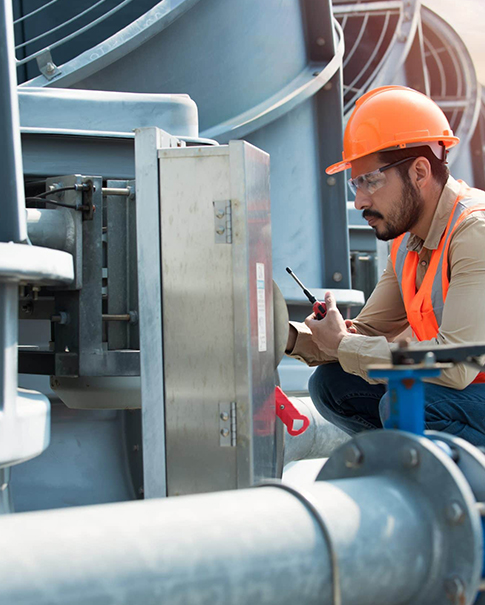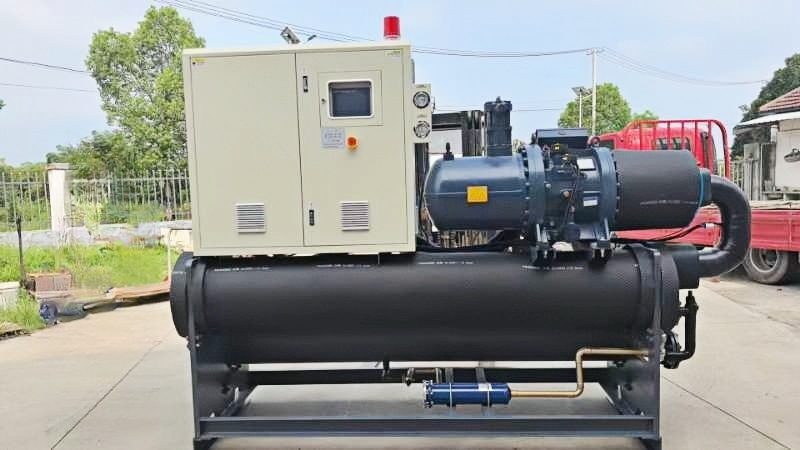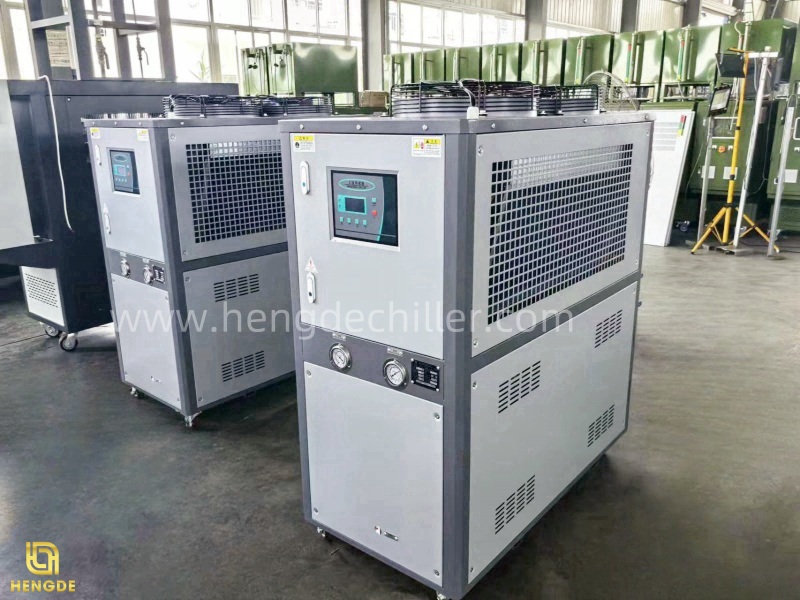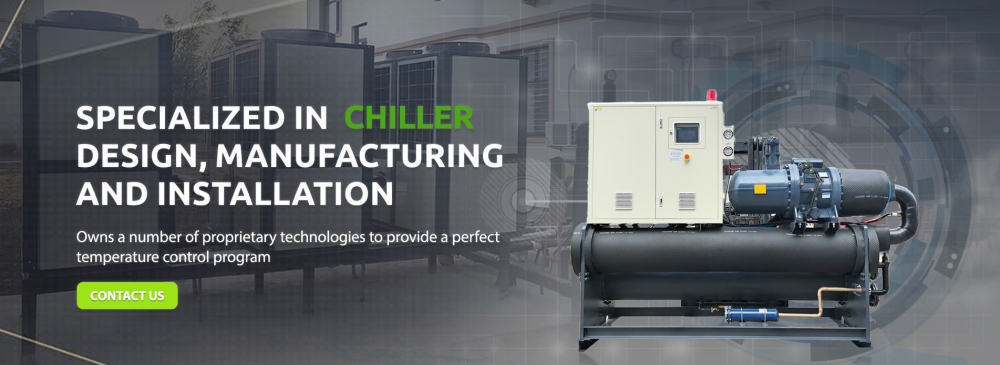
Chillers achieve cooling primarily through the refrigeration cycle, where four key components—compressor, condenser, expansion valve, and evaporator—work in close coordination. Below is a detailed explanation of how chillers create an effective cooling process:

1.Compressor Pressurization
The compressor, as the heart of the chiller, plays a crucial role in converting low-temperature, low-pressure refrigerant gas into high-temperature, high-pressure gas. During the compression process, the temperature and pressure of the refrigerant gas both rise. This change in state sets the stage for the subsequent condensation process, as refrigerant gas at higher pressures is more effective at transferring heat to the cooling medium, leading to a phase change.
2.Condenser Heat Exchange
Once the high-temperature, high-pressure refrigerant gas enters the condenser, it undergoes heat exchange with the surrounding environment. In air cooled chillers, a fan drives air through the condenser to carry away heat, while water-cooled chillers utilize circulating water to absorb heat. During this process, the refrigerant gas cools down and condenses into a high-pressure liquid. Condensers are typically equipped with high-efficiency heat dissipation devices, such as variable-speed fans or enhanced heat exchange tubes, to improve heat transfer efficiency and speed up the refrigerant condensation process.
3.Expansion Valve Throttling and Pressure Drop
When the high-pressure liquid passes through the expansion valve, there is a significant drop in both pressure and temperature. The primary function of the expansion valve is to regulate the flow of refrigerant, ensuring that it can fully evaporate in the evaporator, thereby achieving an effective cooling effect. This flow control is critical for maintaining the stable operation of the refrigeration system and optimizing its cooling efficiency.
4.Evaporator Heat Absorption
The low-pressure, low-temperature refrigerant liquid enters the evaporator, where it quickly absorbs heat from the surrounding environment. In practical applications, chillers primarily absorb heat from cooling water, causing the refrigerant to vaporize into a low-temperature, low-pressure gas. During this process, the water inside the evaporator is cooled and then pumped to the equipment or systems that need cooling, transferring the heat and meeting the cooling demands of the system.
Through the continuous cycle of these four steps, chillers can reliably supply low-temperature cooling water to equipment or systems, ensuring stable operation under optimal temperature conditions.
Compressor: Increases refrigerant pressure and temperature.
Condenser: Dissipates heat, causing refrigerant to liquefy.
Expansion Valve: Reduces refrigerant pressure.
Evaporator: Absorbs heat, achieving cooling.

In summary, industrial chillers rely on the seamless cooperation of the compressor, condenser, expansion valve, and evaporator, as well as the continuous flow of refrigerant through these components, to achieve cooling. This process ensures the circulation of cooled water for various industrial applications and research experiments, providing reliable cooling support.
Hengde, with years of expertise in the chiller industry, is committed to continually optimizing product performance. Our chillers not only offer high cooling efficiency but are also equipped with intelligent control systems that precisely adjust cooling capacity to meet the diverse needs of different industries. With exceptional quality and comprehensive after-sales service, Hengde has built a strong reputation in the market, making it a trusted choice for companies seeking reliable refrigeration equipment.
Choose Hengde-Choose Perfect Chillers!
